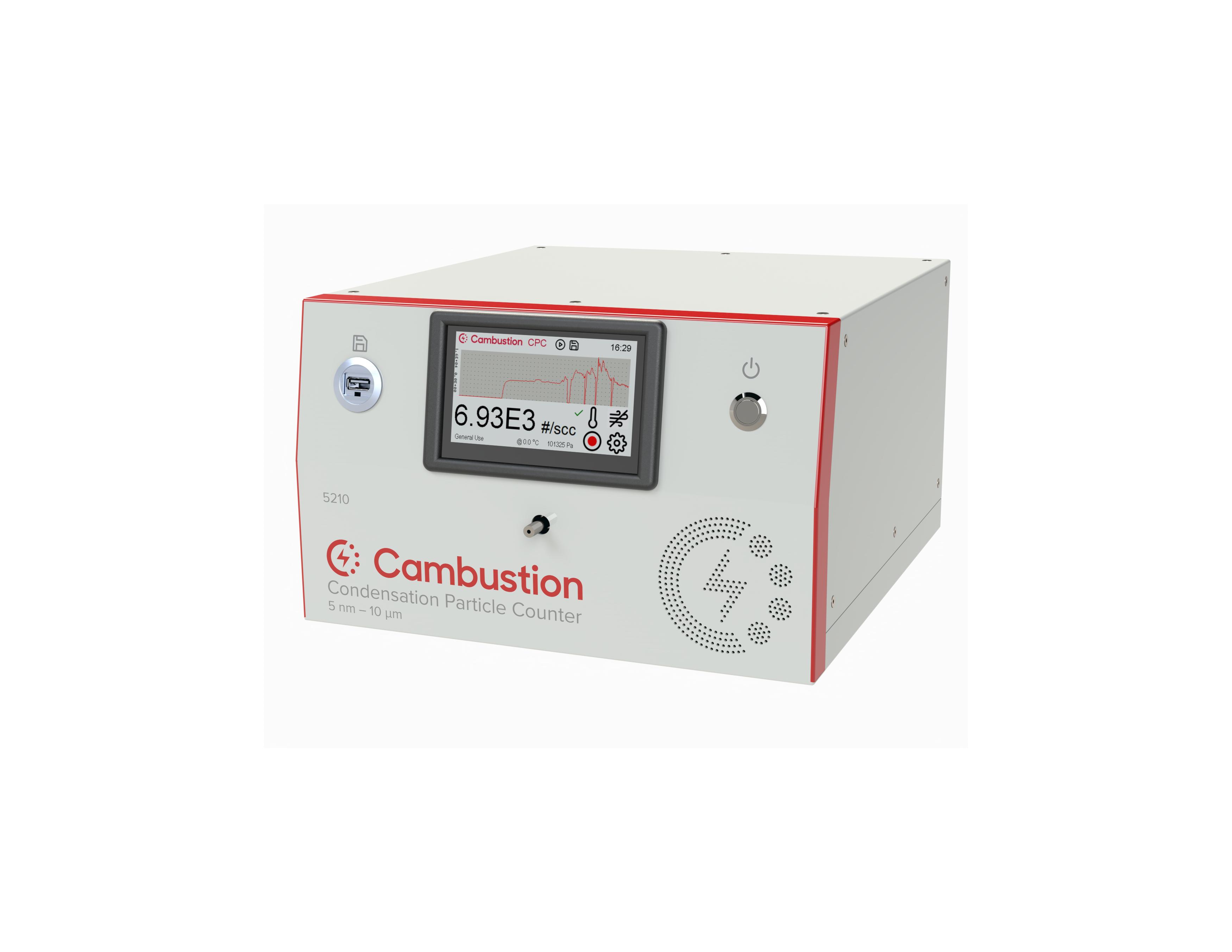New wide range fast CPC: from 5 nanometres to 10 microns
We are pleased to launch our latest product, the 5210 Condensation Particle Counter (CPC), at EAC 2024.
The 5210 detects particles from 5 nanometres to 10 microns, and incorporates design features which ensure both accuracy and calibration stability.
Being who we are, the 5210 is of course also fast response, with a T90–10% of less than 100 ms, and a T63 of less than 50 ms.
The 5210 was borne out of a need we and our customers had for a CPC which would extend into the multi-micron size range. Having brought to the market the Aerodynamic Aerosol Classifier which extended the range of particle size classifiers into the multi-micron range (sidestepping the multiple charging issues which limit DMAs), we found it frustrating that there was not a CPC on the market we could pair with the AAC to produce Scanning Aerodynamic Size Spectrometer (SASS) scans up to the top end of its size range. We and our collaborators found (e.g. Johnson et al. 2018) that commercial CPCs we tried were exhibiting a significant drop-off in counting at the larger sizes, which left the only alternative being an OPC and a CPC in parallel with the disadvantage of being generally clunky, drawing increased sample flow and needing somehow to join the data together at the overlap.
Our development of the Mass and Mobility Aerosol Spectrometer (M²AS) which uses a CPC as a component has also demonstrated the need for a CPC which can count into the multi-micron range.
The size limitations of DMAs of course places a practical limit on the upper range of the SMPS, meaning that under the previous state-of-the-art there was not much point in a CPC with an increased upper range for sizing applications.
However, beyond size spectrometers, there are a whole range of wider applications where larger particles are often present which will benefit from a larger upper size cut in a CPC, for example:
Brake and Tyre particles
Bioaerosols
Resolving the full 10 μm of PM10
Cleanrooms
There is no inherent reason why CPCs can't in principle count the larger particles, they don't need to have working fluid condensed on them as they will be counted by the OPC component directly. The 5210 is carefully engineered to avoid particle impaction which causes particle loss for larger particles. We've gone for a horizontal design for practical integration with most nanoparticle instrumentation without introducing bends in either the CPC or interconnecting pipework (flows and dimensions being chosen to minimise gravitational settling which is not so significant < 10 μm in any case).
The temperature and pressure conditions at which a concentration measurement are made are so important to data integrity and comparability — one needs to be clear what the "cc" in N/cc actually means. The 5210 clearly displays and records the current conditions and can convert to any "standard conditions" at the touch of a button; the user can also select from a range of carrier gases such that flows and concentrations are modified to match.
Cambustion is actually no stranger to CPC design; we co-developed the original "hot" CPC (Collings et al., 2014), and although never available commercially, variants of this have been used over the years on internal and collaborative projects; although this is very different to the 5210, the latter being a butanol CPC.
For more details, see the 5210 CPC web page or join us at EAC in Tampere, UFP Symposium in Berlin, AAAR in Albuquerque. or AAC in Sarawak in the coming weeks and months.
